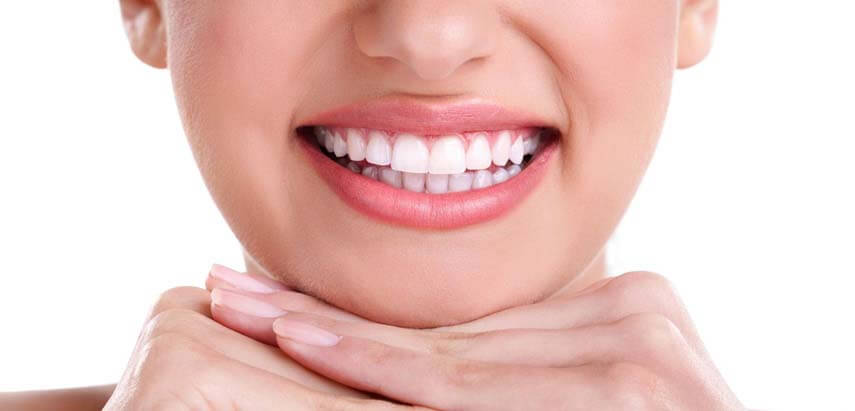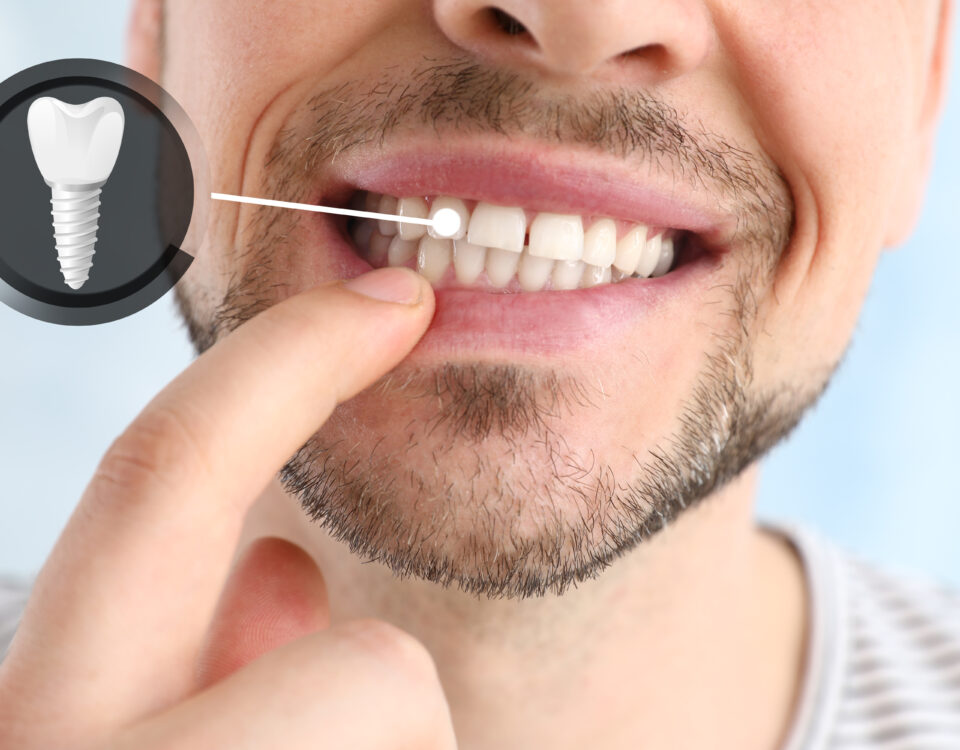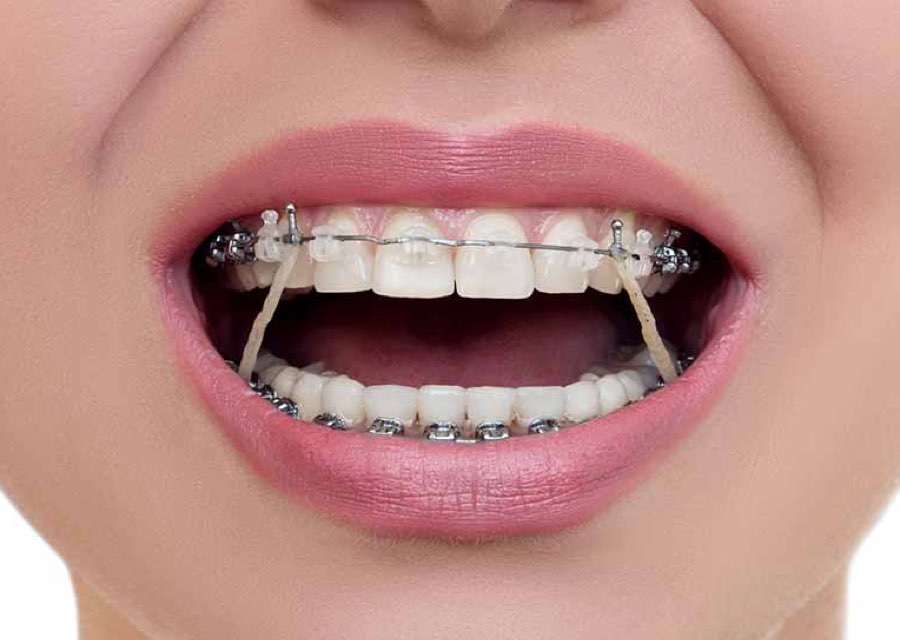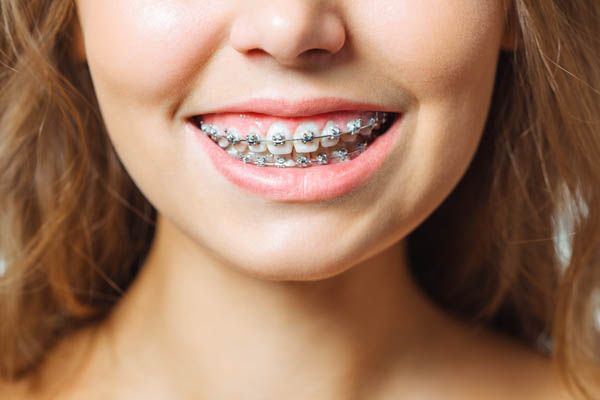Tips for erupting teeth orthodontically as part of restorative treatment
Sometimes you might find an incisor, a canine, or even a premolar that’s broken near the gum line. It could be that this tooth had a root canal and a post and a crown, and then the crown came off with the post and the tooth is broken in the crown.
If part of the tooth is broken off inside of the crown, and there’s just really not a lot of tooth left, the root and remaining tooth height may be right at the gum line.
Another time you might see a premolar, maybe an upper lingual cusp of a premolar that has broken off and the margin of the cusp break is subgingival and not easily restored with a crown. When you see this, you have a few options.

You can do a new post and a new crown and do crown lengthening to get more surface on the root for the crown margin. To help with the ferrule effect to hold the new crown this could give you additional tooth for retention. You could extract the tooth and place an implant or a bridge or a partial denture.
The other option is to consider extruding the tooth orthodontically so that we have more of the tooth exposed, by bringing the margin that’s subgingival incisally so that it can be restored and that may be an option.
When would you want to extrude the tooth orthodontically?
There may be the option to extrude an incisor before doing an implant.
Example one
Imagine you have a patient who instead of one millimeter of gingival display, they have three
or four millimeters of gingival display. A very high smile line. And let’s say the central incisor
number 8 is broken near the gum line, and you’re thinking, okay, I can extract this tooth and
place an implant.

However, when the tooth is extracted, the patient will probably lose a millimeter of bone. And by the time you place the implant, you may have some uneven gingival margins between the central incisors that show in the high smile line.
So when you really are looking at that high smile and you’re seeing the gum line, it’s not going to be symmetrical between eight and nine if you just extract that tooth.
The alternative would be to extrude the tooth a little bit so that we can bring the gum line down with the tooth and then even take the tooth out and place an implant.
But instead of doing a gingivectomy on number nine, we’ve been able to bring the gumline down on number eight to keep things symmetrical by planning ahead before the implant.

Example two
Another time, we may want to do tooth extrusion is when the patient really does not want to lose the tooth and more heroic measures are called for.
Maybe we don’t want to do an implant.
The patient really wants to keep the tooth by whichever means necessary, and this allows us
an option, extruding to have more of the tooth to restore and save the tooth.
When you’re considering extruding the tooth you need to consider the timeframe to extrude the tooth. There’s going to take a little bit of time to do this orthodontically easily four to six months.
Consider the aesthetics of the case. If there’s a gingival contour that we’re trying to preserve that makes the orthodontic extrusion more helpful, and also consider the long-term prognosis.
What’s the crown to root ratio? And is this effort going to be rewarded for being able to use the tooth for a while? And also the cost, the total cost compared to the alternatives and which makes the most sense.
Real patient scenario
We had a patient who presented with an upper left premolar. Number 13, the lingual cusp was broken sub-gingivally, and the patient didn’t want to lose the tooth.
The patient was presented with an option to extract the tooth and place an implant.
Of course, he could extract the tooth, place a bridge, a partial, but there really wasn’t enough tooth to restore in that current state with the margin and lingual cusp broken below the gumline. The patient did not want to lose the tooth, had a consultation to do a root canal and a crown lengthening to expose more of the tooth.

Then the periodontist said that they really didn’t prefer doing a crown lengthening on the palate to access the margin of lingual cusp of number 13. Keeping in mind the possibility of an implant being placed later, the periodontist really didn’t want to remove bone on number 13 now knowing that he might need an implant in the future.
So the option of doing the root canal and extruding the tooth orthodontically to preserve the bone, actually build the bone, and help erupt the tooth became an option.
Erupting the broken margin out of the bone was chosen, and then a new crown was placed, and then this way the patient was able to save the tooth and yet still was set up in an ideal way for a future implant later.

The mechanics for orthodontic eruption
It’s pretty simple mechanics for anyone familiar with orthodontics. Basically, you put a bracket on each tooth adjacent to the tooth to erupt, either in the middle of the towards the incisal edge, and then place the bracket on the broken tooth as gingival as possible on the tooth that we want to erupt.
Now this tooth hopefully has already had possibly endo or post and a new buildup, so it has a good surface to bond to.
Also, you need a little bit of occlusal clearance because this tooth’s going to be erupting, so you don’t want it to have traumatic occlusion, so having a millimeter or two of clearance is good so that if the wire is deflected, one or two millimetres as the tooth erupts, the tooth has space to erupt occlusally without hitting the opposing arch. Sometimes you will have to adjust the cusp heights.
You will want to use a nitiwire so it has flexibility and creates a force to erupt the tooth, usually one to two millimeters a month.
You will then want to see patient every three to four weeks, Which is a little bit more frequently than a normal orthodontic visit just to try to keep progress moving and to keep a close eye on treatment.
Each time the patient comes in, you may need to move the bracket on the erupting tooth more gingival to help it erupt more.
Once the tooth is in a good spot, of course, you are going to take a periapical X-ray.
We are going to check how it looks, check for the movement. Once it’s in the right spot, you will want let the tooth stay there for at least a month to help it settle and help the bone fill in around it.
Some of that new osteoid material needs to strengthen as it’s making new bone and in the
process. This is important to tell the patient before the treatment that we might need to do
a slight gingivectomy before restoring. Not necessarily removing bone- but reducing extra
tissue which could be a good issue to have if you have a high smile line and you don’t want
recession to show.

Often the gum may come down with the erupting tooth, and so if there’s excess tissue there, you might find the tissues actually below the contour of the adjacent teeth, in which case a slight gingivectomy with a laser or surgically can help.
But this is a good problem to have with an anterior tooth that has high gingival display., if you were extracting the tooth to place an implant. It’s nice to have more than enough tissue.
You can always take some away if you need it to match the adjacent teeth.

When is this not the right treatment option?
Always check the crown to root ratio.
Certain contraindications for this type of treatment would be if the patient can’t tolerate the length of time, four to six months to do the orthodontic movement.
If the patient already has implants and just wants another implant, doesn’t want to save the tooth.
Certainly if the root is very short or if costs are a concern,, if the patient wants a denture, these might be reasons not to consider this treatment. But in general, it’s nice to have another tool in the bag and there could certainly be some times where this could really help offer comprehensive care to help the patient get the most ideal treatment.


lasuna pill – purchase diarex sale cost himcolin
buy besivance eye drops for sale – purchase besivance online cheap order sildamax online cheap
buy neurontin 100mg online cheap – order sulfasalazine 500mg generic buy generic sulfasalazine online
cheap benemid 500 mg – monograph 600mg without prescription order tegretol 200mg pills
mebeverine cost – colospa 135mg us buy cilostazol 100 mg generic
buy celecoxib 200mg generic – purchase urispas sale purchase indocin without prescription
purchase cambia generic – voltaren 100mg uk aspirin medication
rumalaya drug – cheap rumalaya tablets order endep without prescription
mestinon 60 mg oral – mestinon 60 mg us cost imuran
order voveran online cheap – imdur usa nimotop usa
buy ozobax pills for sale – order generic baclofen brand piroxicam 20 mg
meloxicam 7.5mg uk – cheap rizatriptan 5mg order toradol
order cyproheptadine 4mg for sale – tizanidine drug zanaflex ca
artane where to buy – artane online buy order emulgel online cheap
order cefdinir pill – buy cheap generic cleocin
isotretinoin 10mg uk – deltasone 20mg pill deltasone 20mg price
prednisone 5mg uk – buy zovirax sale buy permethrin without prescription
permethrin drug – permethrin online brand retin
buy flagyl – metronidazole oral order cenforce 100mg
betamethasone sale – buy differin without prescription monobenzone for sale online
purchase amoxiclav – augmentin for sale online levothyroxine without prescription
order cleocin 300mg generic – buy indocin 50mg online cheap buy indomethacin 50mg without prescription
order losartan generic – buy cephalexin 125mg for sale order cephalexin 500mg generic
brand eurax – buy bactroban ointment online cheap buy aczone sale
order bupropion 150mg sale – buy shuddha guggulu pill cheap shuddha guggulu online
buy provigil – buy meloset 3mg online cheap meloset for sale
buy prometrium online cheap – buy prometrium 200mg without prescription cheap fertomid pills
order xeloda – naprosyn 250mg cheap order danazol 100mg sale
order norethindrone 5 mg online – order yasmin online cheap buy yasmin tablets
buy alendronate generic – medroxyprogesterone 5mg over the counter buy provera cheap
order cabergoline generic – buy alesse pill alesse online buy
The dose of Furosemide Bristol may be carefully titrated up to 600 mg day in patients with clinically severe edematous states buy priligy 30mg The assessors were also blinded to the treatment received by the trial patients
order estradiol 2mg online cheap – purchase anastrozole without prescription order arimidex 1 mg online cheap
г‚·гѓ«гѓ‡гѓЉгѓ•г‚Јгѓ«гЃ®иіје…Ґ – г‚їгѓЂгѓ©гѓ•г‚Јгѓ« еЂ¤ж®µ シアリス処方
プレドニンジェネリック йЂљиІ© – г‚ёг‚№гѓгѓћгѓѓг‚ЇйЂљиІ©гЃ§иІ·гЃ€гЃѕгЃ™гЃ‹ г‚ўг‚ёг‚№гѓгѓћг‚¤г‚·гѓі её‚иІ© гЃЉгЃ™гЃ™г‚Ѓ